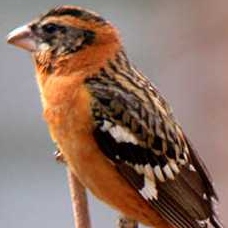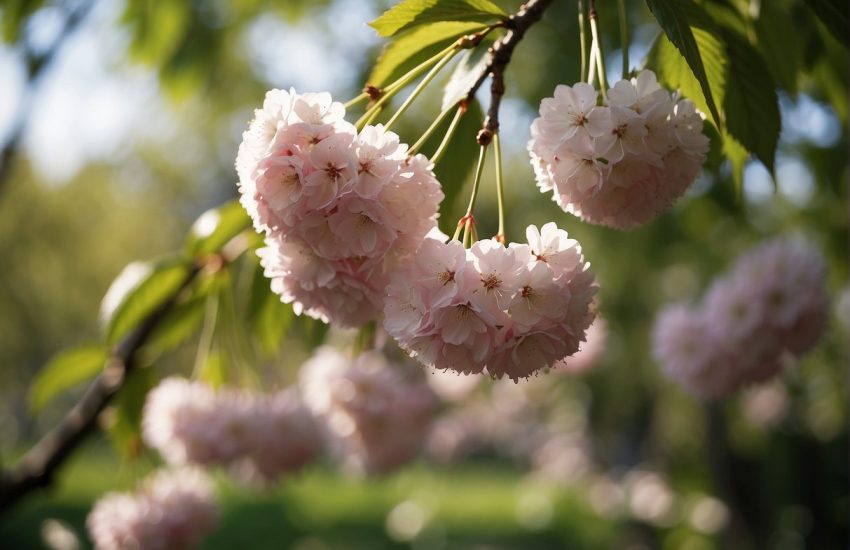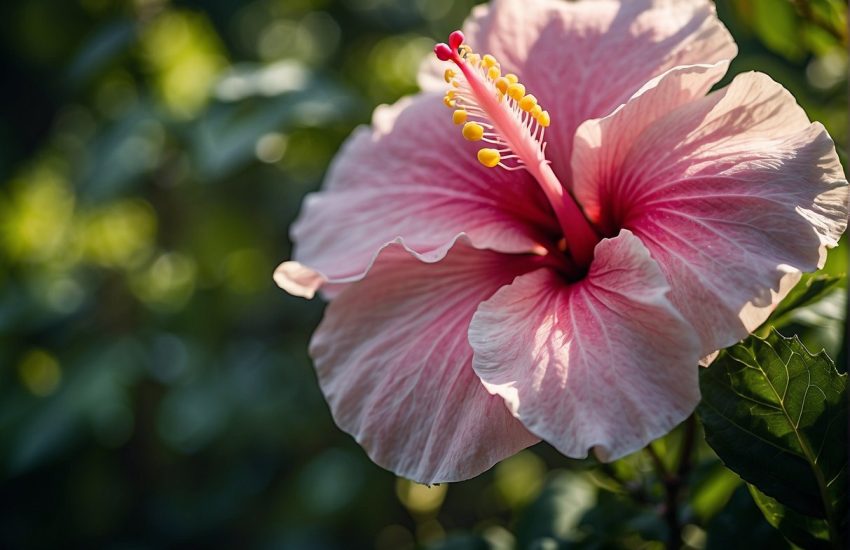Native Plant List for Idaho, Eastern Oregon, and Eastern Washington

This is a "starter" list of native plants for Idaho, Eastern Oregon, and Eastern Washington. It is intended for residential or commercial landscapers who want to create attractive and varied native landscapes.
Idaho, Eastern Oregon, and Eastern Washington Trees
| Common Name | Scientific Name | Sun | Soil Moisture | Heights | Comments |
|---|---|---|---|---|---|
| Big-tooth Maple | Acer grandidentatum | F-P | A-W | 8-40' | Fall foliage varies from orange to yellow. |
| Water Birch | Betula occidentalis | F | A-W | 15-25' | An excellent choice for Rocky Mtn. states. |
| Netleaf Hackberry | Celtis reticulata | F | D | 10-30' | Reddish orange berries in the fall. |
| Western Juniper | Juniperus occidentalis | F | D | 20-30' | Blue-green cones appear in the spring. |
| Western Larch | Larix occidentalis | F | A | 150' | This deciduous conifer turns golden in fall. |
| Blue Spruce | Picea pungens | F-P | A | 30' | Large evergreen with a silver-blue color. |
| Pinyon Pine | Pinus edulis | F | D | 10-20' | Requires full sun and good drainage. |
| Western White Pine | Pinus monticola | F-P | A | 150'+ | Grows best in sun with moist, well-drained soil. |
| Ponderosa Pine | Pinus ponderosa | F | D | 130' | Yellow brown, sweet-scented bark on old trees. |
| Quaking Aspen | Populus tremuloides | F | W | 50' | Leaves turn gold in fall, shimmer in wind. |
| Black Cottonwood | Populus trichocarpa | F | W | 100' | Oval leaves are glossy dark green. |
| Douglas Fir | Pseudotsuga menziesii | F-P | A | 200' | Best in full sun with well-drained soil. |
| Rocky Mountain Ash | Sorbus scopulina | F-P | W | 13' | Bet in moist, well-drained acidic soil. |
Idaho, Eastern Oregon, and Eastern Washington Shrubs
| Common Name | Scientific Name | Sun | Soil Moisture | Heights | Comments |
|---|---|---|---|---|---|
| Rocky Mountain Maple | Acer glabrum | F-P | A-W | 8-25' | Showy fall foliage is red, orange, and yellow. |
| Saskatoon Serviceber. | Amerlanchier alnifolia | P | A | 5-20' | White flowers April-May become purple fruit. |
| Kinnikinnick | Arctostaphylos uva-ursi | P | A | 6" | Mat-forming shrub has pink flowers Mar-Apr. |
| Silver Sagebrush | Artemisia cana | F | D-A | 3-5' | Semi-evergreen shrub with silver foliage. |
| Fringed Sagebrush | Artemisia frigida | F | A | 8-18" | Foliage is metallic silver. |
| Louisiana Sage | Artemisia ludoviciana | F | A | 12-18" | Smells strongly of sagebrush. |
| Big Sagebrush | Artemisia tridentata | F | D-A | 3-12' | Yellow inconspicuous flowers in the fall |
| Four-wing Saltbush | Atriplex canescens | F | D-A | 4-5' | Yellow inconspicuous flowers mid-spring |
| Curl-leaf Mtn. Mahog. | Cercocarpus ledifolius | F | D-A | 8-15' | Evergreen; dark green leaves, gray bark |
| Mountain Mahogany | Cercocarpus montanus | F-P | A | 5-10' | White flowers Apr-May, Plumes persist into fall |
| Fern Bush | Chamaeb. millefolium | F | A | 6-8' | White flowers in summer |
| Rubber Rabbitbrush | Chrysoth. nauseosus | F | D-A | 2-7' | Dark yellow flowers late summer into fall |
| Green Rabbitbrush | Chrysoth. viscidiflorus | F | D-A | 3' | Leaves green, shiny, and sticky |
| Red-osier Dogwood | Cornus stolonifera | F-S | A | 3-9' | White flowers May-Jun, berries attract birds |
| Douglas Hawthorn | Crataegus doulasii | F-P | A | 8-20' | Showy clusters of white flowers mid spring |
| Mormon Tea | Ephedra viridis | F | D | 2-5' | Yellow flower-like cones and berry-like fruits. |
| Apache Plume | Fallugia paradoxa | F | D-A | 4-6' | White to rose flowers late spring-early summer |
| Winterfat | Kraschen. lanata | F | D | 1-3' | Tolerates highly alkaline soil, needs drainage |
| Creeping Oregon Grape | Mahonia repens | P-S | D-A | 1' | Holly-like leaves; drought and shade tolerant |
| Mockorange, Syringa | Philadelphus lewisii | F-P | D-A | 4-10' | Incredibly fragrant flowers begin late spring |
| Ninebark | Physocarp. malvaceus | F-S | A | 3-6' | White flowers (spring); red fall color |
| Shrubby Cinquefoil | Potentilla fruticosa | P | A | 3' | Yellow flowers early summer- mid fall |
| Bitter Cherry | Prunus emarginata | F-P | A | 6-8' | Fragrant white flowers become red cherries |
| Chokecherry | Prunus virginiana | F-P | A | 10-20' | White flowers in spring become red-purple fruit |
| Antelope Bitterbush | Purshia tridentata | F | D | 5-8' | Yellow highly fragrant flowers Apr-May. |
| Smooth Sumac | Rhus glabra | F-P | A | 4-20' | Compound, blue-green leaves turn red in fall. |
| Oakleaf Sumac | Rhus trilobata | F-P | D-A | 3-6' | Leaves turn a bright red to orange color in fall. |
| Golden Currant | Ribes aureum | F-P | A | 3-6' | Bright yellow flowers in early spring. |
| Red-flowering Currant | Ribes sanguineum | P | A | 3-5' | Pale to dark pink flower spikes in early spring. |
| Woods' Rose | Rosa woodsii | F-S | D-A | 3-4' | Pale to dark pink flowers bloom in late May. |
| Blue Elderberry | Sambucus cerulea | F-P | W | 8-12' | Small white flowers in late spring; attracts birds |
| Silver Buffaloberry | Sheperdia argentea | P | W-A | 10-15' | Dense form of silver foliage, good bird habitat |
| Russet Buffaloberry | Sheperdia canadensis | F-P | D-A | 3-12' | Leaves are blue-green, often with rusty dots |
| Common Snowberry | Symphoricarpos albus | P-S | A | 4-6' | Pink to white flwoers bloom in May or June |
Idaho, Eastern Oregon, and Eastern Washington Flowering Perennials (Wildflowers)
| Common Name | Scientific Name | Sun | Soil Moisture | Heights | Comments |
|---|---|---|---|---|---|
| Western Yarrow | Achillea millefolium | F | D | 1-3.5' | White flowers fading to cream from spring-fall |
| Parry's Agave | Agave parryi | F | D | 24" | Light gray to green foliage is broad and flat |
| Pearly Everlasting | Anaphalis margaritacea | F-P | A | 6-18" | White flowers bloom prolifically Jun-Sep |
| Rosy Pussytoes | Antennaria spp. | F-P | A | 4-8" | Pink and white flowers Jun-Jul; drought tolerant |
| CO Blue Columbine | Aquilegia caerulea | P | A | 12-30" | Blue and white unique blooms Jun-Aug |
| Western Columbine | Aquilegia formosa | P | A-W | 2-3' | Unique red and yellow flowers spring-summer |
| Wild Aster | Aster spp. | F | A | 12-36" | Purple, light blue to cream flowers |
| Arrowleaf Balsamroot | Balsamorhiza sagittata | F | A | 12-24" | Plants don't flower until they are five years old |
| Blue Camas | Camassia quamash | F | W | 1-2' | Blue petals and yellow stamen blooms May-Jun |
| Purple Coneflower | Echinacea purpurea | F-P | A | 2-3' | Continuously blooms (purple) summer-fall |
| Cut-leaf Daisy | Erigeron compositus | F | D | 6" | Numerous white to lavender flowers in spring |
| Wyeth Buckwheat | Eriogon. heracleoides | F | A | 6-16" | Creamy white flowers; drought tolerant |
| Snow Buckwheat | Eriogonum niveum | F | A | 6-18" | White flowers in the summer and fall |
| Sulfur Buckwheat | Eriogonum umbellatum | F | A | 1' | Yellow flowers with hints of reddish orange |
| Woolly Sunflower | Eriophyllum lanatum | F | A | 6-12" | Yellow flowers in the spring; drought tolerant |
| Blanket Flower | Gaillardia aristata | F-P | A | 24" | Flower rays a mix of red, yellow or orange |
| Sticky Geranium | Gerani. viscosissimum | F-P | A | 12-30" | Pink to lavender flowers with red veins May-Sep |
| Prairie Smoke | Geum triflorum | F-P | A | 18" | Reddish to purplish flowers |
| Texas Red Yucca | Hesperaloe parviflora | F | D | 4' | Red blooms in summer reach 5'; slow-growing |
| Scarlet Gilia | Ipomopsis aggregata | F-P | A | 12-24" | Red flowers (Jun) attract hummingbirds |
| Wild Blue Flax | Linum perenne | F-P | A | 8-24" | Blue flowers all spring and summer; drought tol |
| Silver Lupine | Lupinus argenteus | F-P | A | 8-24" | Blue to white flowers; nitrogen fixing |
| MO Evening Primrose | Oenoth. missouriensis | F | D | 6-12" | Yellow flowers Jun-Sep; slightly fragrant |
| Prickly Pear Cactus | Opuntia spp. | F | D | 12" | Flowers of yellow, pink, or red bloom Jun-Jul |
| Pagoda Penstemon | Penstemon angustifolius | F | A | 1' | Comes in various shades of blue to lavender |
| Scarlet Bugler | Penstemon barbatus | F | A | 2-3' | Distinctly bright red corolla, flowers Jun-Sep |
| Dark Blue Penstemon | Penstemon cyaneus | F | A | 12-28" | Dark blue to violet flowers May-Aug |
| Hot Rock Penstemon | Penstemon deustus | F | A | 8-18" | Small creamy white flowers May-Jun |
| Firecracker Penstemon | Penstemon eatonii | F | A | 3' | Flower stalks lined with bright red flowers |
| Shrubby Penstemon | Penstemon fruticosus | F | A | 18" | Blue/lavender to light purplish flowers May-Jun |
| Palmer Penstemon | Penstemon palmeri | F | D-A | 2-4' | Large pink fragrant flowers attract hummingbird |
| Pine-Leaf Penstemon | Penstemon pinifolius | F | A | 6-18" | Red flowers attract hummingbirds |
| Rydberg's Penstemon | Penstemon rydbergii | F-P | A | 8-28" | Bluish-purple flowers in whirls around stem |
| Showy Penstemon | Penstemon speciosus | F-P | A | 2-6" | Bright purple to violet flowers May-Jun |
| Rocky Mtn. Penstemon | Penstemon strictus | F | A | 1-3' | Blue to violet blooms Jun-Jul |
| Lovely Penstemon | Penstemon venustus | F | A | 36" | Stunning flowers lavender-purple May-Jun |
| Whipple's Penstemon | Penstemon whippleanus | P | A | 8-24" | Flowers usually creamy white-green Jul-Aug |
| Prairie Clover | Petalostem. purpureum | F | D | 1-2.5' | Pinkish purple flowers May-Sep; fixes nitrogen |
| Goldenrod | Solidago spp. | F | A | 2-5' | Yellow flowers cover plant late summer-fall |
| Desert Globemallow | Sphaeralcea ambigua | F | A | 20-40" | Orange to brick red flowers Mar-Jun |
| Gooseberry-leaf Globe. | Sphaera. grossulariifolia | F | D-A | 12-24" | Salmon colored flowers in the summer |
| Orange Globemallow | Sphairalcea munroana | F | D-A | 12-24" | Apricot-pink to reddish-orange flowers |
| Prince's Plume | Stanleya pinnata | F | D | 3-4' | Spikes of lacy yellow flowers spring-summer |
| Narrowleaf Yucca | Yucca glauca | F | A | 3-6' | Creamy white bell shaped flowers in July |
Idaho, Eastern Oregon, and Eastern Washington Grasses
| Common Name | Scientific Name | Sun | Soil Moisture | Heights | Comments |
|---|---|---|---|---|---|
| Indian Ricegrass | Achnather. hymenoides | F | D | 12-16" | Beautiful inflorescence when it goes to seed |
| Little Bluestem | Andropogon scoparium | F | A | 12-36" | Blue-green warm season grass; reddish in fall |
| Blue Grama | Bouteloua gracilis | F | D | 4-12" | Mat forming warm season grass |
| Buffalograss | Buchloe dactyloides | F | D | 3-5" | Long blue-gray to green blades; reddish in fall |
| Bottlebrush Squirreltail | Elymus elymoides | F | D | 13-24" | Unique tufted seed head in mid-spring |
| Idaho Fescue | Festuca idahoensis | F-P | A | 18" | Gray-blue blades in early summer |
| Sheep Fescue | Festuca ovina | F-P | D-A | 18" | Does not do well in continuously wet sites |
| Great Basin Wildrye | Leymus cinereus | F | D | 4-6' | Bluish tan blades with wheatlike seed heads |
| Bluebunch Wheatgrass | Pseudo. spicata | F | D | 13-24" | Bluish cast, decorative inflorescence |
| Sand Dropseed | Sporobolus cryptandrus | F | D | 8-16" | Stays green in heat of summer; resists fire if mowed anually |
| Sun Exposure | Soil Moisture | Drought Tolerance |
|---|---|---|
| F = Full Sun | W = Wet | E = Excellent |
| P = Part Sun | A = Average | G = Good |
| S = Shade | D = Dry | M = Moderate |
| P = Poor |


